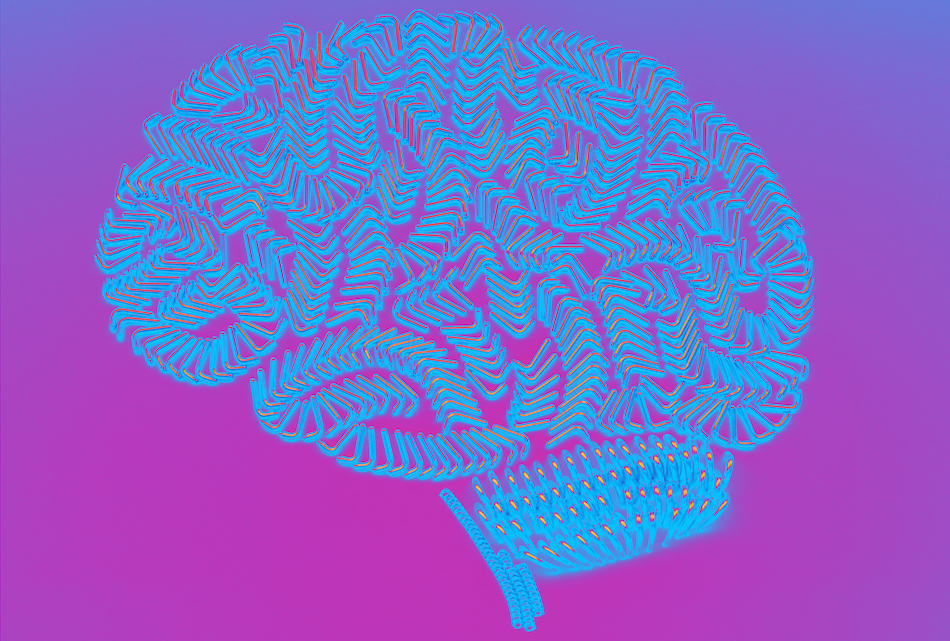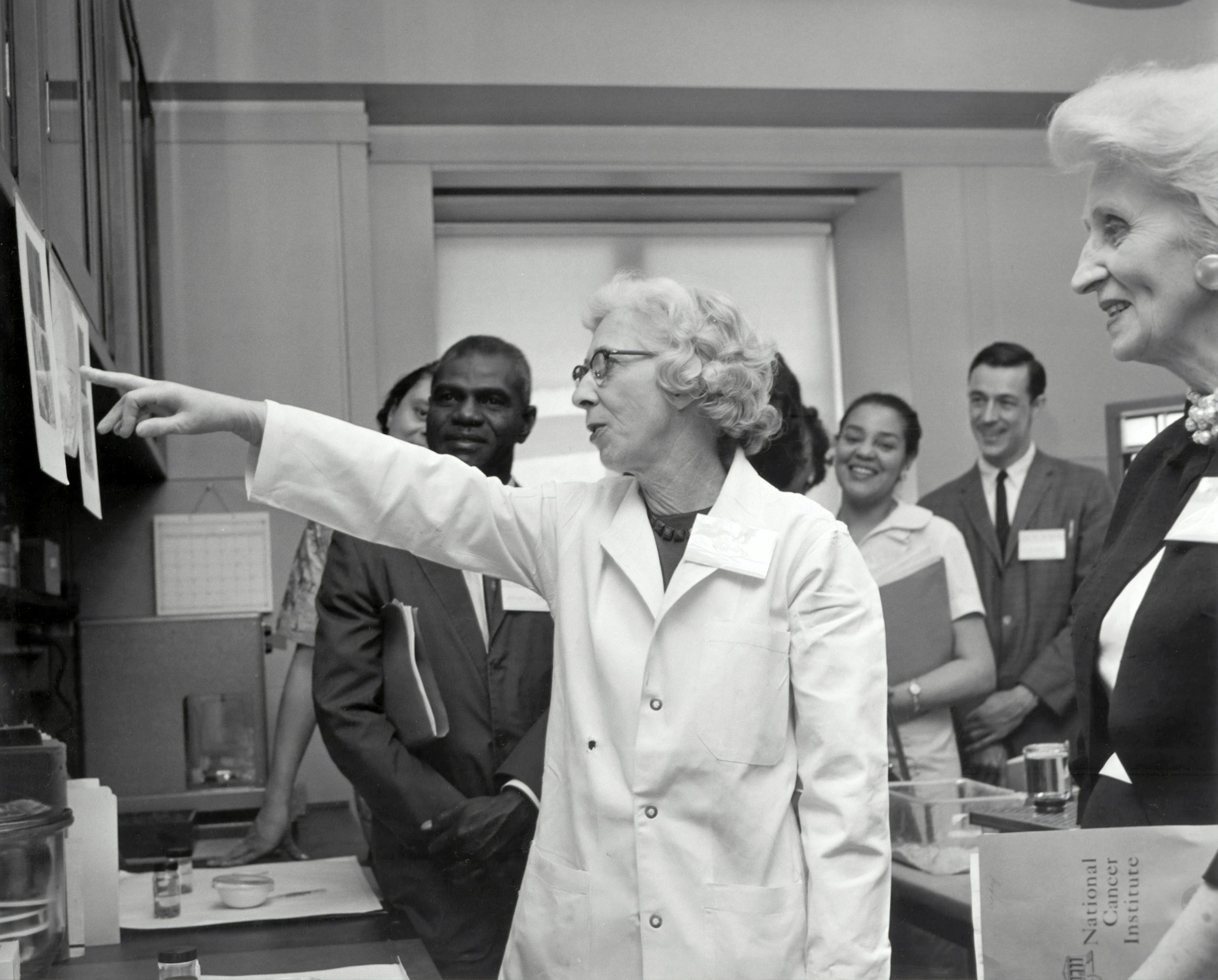Neurodegeneration can come out of nowhere: Mysterious brain disease may look like an infection but is caused by misfolded proteins. Image credit: The Oxford Scientist.
This article was originally published in the Oxford Scientist’s Print edition, Mysteries, in Hilary Term 2023. You can read more of our Print articles here.
The phrase “infectious disease” reliably conjures a plethora of unpleasant images. These may include the virus that causes influenza, cramp-inducing Helicobacter pylori (a common bacterial culprit of stomach infections), or lockdowns and social distancing measures. Whatever comes to mind, we rarely think of proteins as drivers of infection.
In the 1950s, a mystery unfolded in the Fore people in Papua New Guinea. The population, which has a custom of funerary cannibalism, was suddenly overtaken with bodily tremors, loss of coordination, and random bouts of laughter. These symptoms—though hallmarks of neurodegenerative disease—resembled an infection. Despite this, and to the confusion of many, no commonplace pathogens such as bacteria or viruses were identifiable.
The curious case of Kuru
Over 70 years later, this curious disease is termed “Kuru”, and is known to be a transmissible spongiform encephalopathy (TSE). Kuru is one of the many TSEs (also known as “prion diseases”) which cause neurodegeneration, filling the brain with holes to resemble a sponge. This neurodegeneration can behave like an infection, with an extremely unusual mechanism of transmission.
Lacking selfish bacterial assailants or viral invaders, no genetic material (DNA or RNA) is transferred in a TSE infection. Instead, proteins called “prions” are the sole drivers of transmission. This concept of DNA- or RNA-independent infection was, and still can be, baffling. So much so that in 2007, there were still schools of thought which clung to the idea that TSEs were caused by a currently unidentified virus.
The discovery of TSEs opened a floodgate. It revealed a new world of infectious disease and exposed a host of mysteries to be unfolded.
Unravelling the misfolding
Prions are not inherently bad. To date, around 50 “good” prions have been identified, hypothesised to protect neurons (cells that comprise the central nervous system and brain) by signalling for repair of the myelin sheath, which vitally insulates nerves. Prions only begin to cause disease when they become misfolded. This occurs either spontaneously, in an inherited process (as in sporadic Creutzfeldt-Jakob disease, a rare and ubiquitously fatal neurodegenerative disease), or through contact with transmitted pathogenic prions.
When transmitted, the disease-causing prion promotes the misfolding of healthy prions within the brain of the infected individual through a process that is very little-understood. The heterodimer model and the fibril model are the two current competing theories of transferrable misfolding, though other theories point to the role of copper ions in this unique phenomenon. The misfolded prions then clump together, forming toxic and insoluble aggregates. Varied pathways of neurodegeneration follow, with spongiform degeneration, brain inflammation, and neuronal death all being thought to cause the symptoms of prion diseases.
Prions are not inherently bad. To date, around 50 “good” prions have been identified, hypothesised to protect neurons.
This explains the mysterious spread of Kuru in the Fore people. Funerary cannibalism involved consuming the brains of the dead. In turn, this exposed consumers to infectious prions from a deceased individual who had spontaneously developed a TSE. Though consuming brains in this way may not be a universal experience, similar transmission can occur by consuming beef infected with Mad Cow Disease.
A novel drug-target
Though currently untreatable, active research strives to improve prognoses for TSEs. The aim is to develop therapeutics that target protein-protein interactions to treat TSEs—a novel concept for the pharmacological field.
In 2019, researchers at Rocky Mountain Laboratories in Montana, USA, found that antisense oligonucleotides (ASOs) significantly delay the onset of TSE symptoms in mice. ASOs, small pieces of RNA or DNA that can bind to specific RNA molecules, influence RNA processing and can “block” the expression of prions. Scientists at the same institute have also identified antibodies (highly specific proteins that mediate immunity) and short, synthetic proteins that prevent the conversion of healthy prion proteins into their misfolded, disease-associated form.
In March 2022, University College London announced a promising new development. A small, preliminary trial found that a first-of-its-kind treatment against CJD showed ‘very encouraging early results’. This trial used fully humanised monoclonal antibodies (mAbs), which are antibodies synthesised in laboratories such that they can bind to specific molecules. These mAbs were synthesised to bind specifically to misfolded prion proteins, preventing their aggregation.
Let prion disease be a reminder that now is still an age of scientific exploration—a time where the remaining mysteries of life await their demystification.
No reversal or halting of disease-progression was observed in any of the six individuals involved in the trial. But several patients had a decrease in their clinical scale rating indicating the severity of their symptoms had reduced. Professor John Collinge, who spearheaded the trial, commented that the promising results of this trial ‘may contribute to the development of therapies for more common dementias, such as Alzheimer’s disease’.
Prion disease feels ominous. But there was a time where cancers, and even infectious diseases, were a similar enigma. Let prion disease be a reminder that now is still an age of scientific exploration—a time where the remaining mysteries of life await their demystification.





